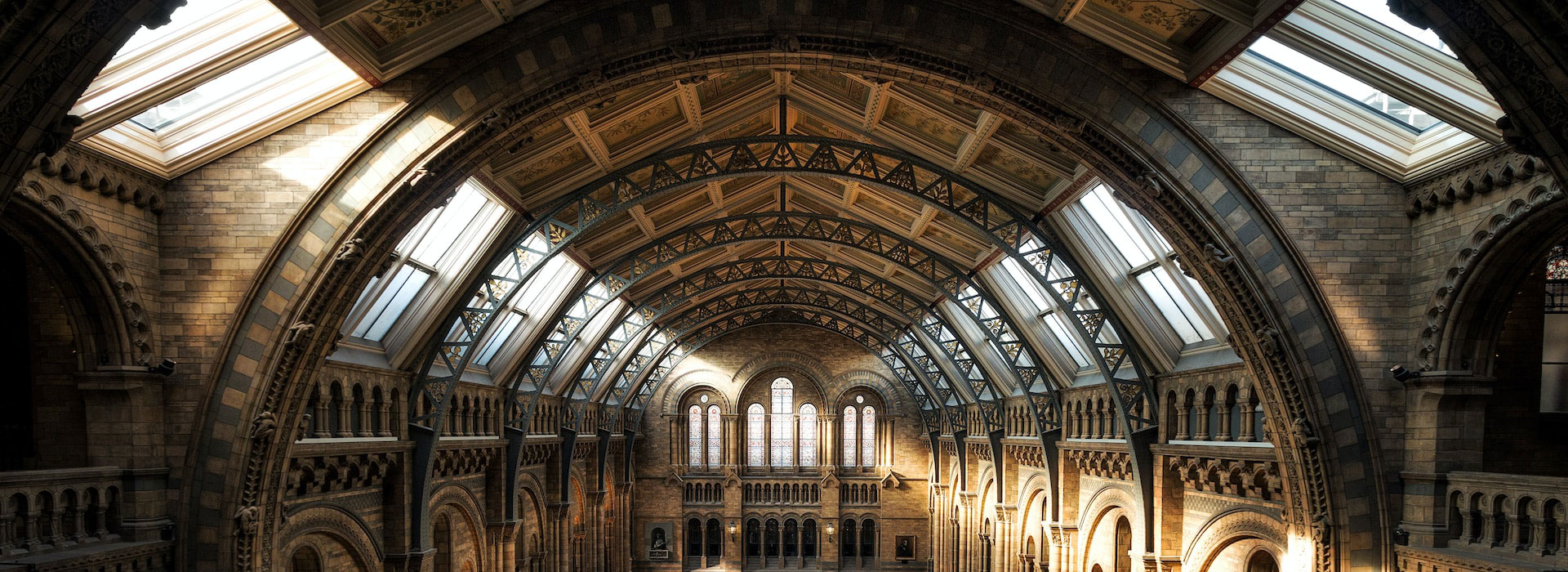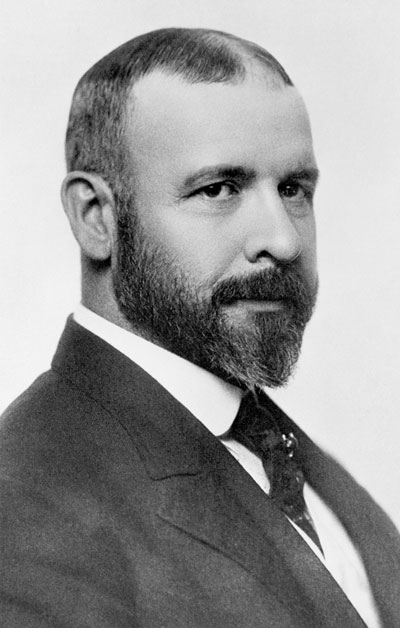The Architects

Louis Sullivan and Frank Lloyd Wright are major figures in American architecture. Sullivan, Wright's architectural mentor, hired the younger man in 1887 as a draftsman to assist with producing construction drawings for the Auditorium Building (1887–1889) in Chicago. As a junior draftsman, Wright also assisted with residential commissions such as the James Charnley House (1891–1892).
The Charnley House, which has long been recognized internationally as a pivotal work of modern architecture, stands as evidence of the extraordinary power of Sullivan and Wright's creativity in collaboration. With the Charnley House, Sullivan rejected the historical details common to Victorian architecture in favor of abstract forms that later became the hallmarks of modern architecture.
It is a sign of Sullivan's admiration for Wright and a testament to their friendship and working relationship that the senior architect allowed his draftsman to become involved in the design process at all. The exterior of Charnley House is a virtually unadorned brick and limestone facade that commands its corner location. The dramatic interior of the house is dominated by an atrium that soars from the first floor hall to a skylight two floors above. The house is symmetrical in plan, with one room located on either side of the central atrium on each floor. The ornament found throughout the interior and exterior of the building reflects both Sullivan's love of sinuous plant forms intertwined with underlying geometric forms and Wright's variations of these themes.

Louis Henry Sullivan
Louis Henry Sullivan (1856–1924) was born in Boston and came to Chicago after the Great Chicago Fire of 1871 to join in the rebuilding e ort. Six months later, Sullivan left for Paris to study architecture at the École des Beaux-Arts, which was the leading school of architecture in the world.
In 1879, Sullivan joined the respected engineer Dankmar Adler (1844–1900), who had been practicing in Chicago since 1866. For fourteen years this relationship produced buildings distinguished by both their design and engineering innovations. Sullivan and Adler's work contributed to the development of the uniquely American building type, the skyscraper, and their partnership produced such remarkable structures as the Auditorium Building (1886–1889) in Chicago, the Wainwright Building (1890–1891) in St. Louis, the Chicago Stock Exchange (1893–1894, demolished), and the Guaranty Building (1894-1895) in Bu alo, New York. Their most renowned residential design was the commission for James Charnley on Astor Street in Chicago, Charnley-Persky House, which was completed in 1892.
Sullivan is well known for his belief that a building's function should be clearly expressed in its form and structure. Discontented with designing in the historical styles taught at the École des Beaux-Arts, Sullivan set out to create an architectural vocabulary that would reflect contemporary American culture. Due to an economic depression that started in the U.S. in 1893, which stifled new architectural commissions, Adler withdrew from the partnership in 1895 and, like Sullivan, continued to practice independently. Among Sullivan's most renowned projects from this later period are the Schlesinger and Mayer Store (now Carson, Pirie, Scott & Co., 1898–1899 and 1902–1903) in Chicago, the Bayard-Condict Building (1897) in New York, and the facade of the Gage Building (1898–1899) in Chicago. After 1900, Sullivan's work consisted mainly of exquisitely designed banks, stores, and churches located in small towns throughout the Midwest. Sullivan's protégés, most notably George Grant Elmslie and Frank Lloyd Wright, carried on his functional theories and philosophy of architectural ornament in their Prairie School designs.

Frank Lloyd Wright
A native of Wisconsin, Frank Lloyd Wright (1867–1959) attended the University of Wisconsin at Madison from 1885 to 1886. Restless with the formal education process, Wright left school in 1887 and moved to Chicago, where he found work as a draftsman for the architectural firm of Joseph Lyman Silsbee. Later that year, Wright joined the Adler & Sullivan firm and worked as a draftsman on the firm's largest project to date, the massive Auditorium Building (1886–1889)
Over the next few years, Wright became the principal draftsman at Adler & Sullivan and indirectly had a hand in the design of projects including the James Charnley House (1891–1892). Although Wright was fired from the firm in 1893 for taking independent commissions, the six years he spent in the Adler & Sullivan o ice were the most influential years of his training. Sullivan's philosophy that the form of a building should derive from the function of its space would be incorporated into Wright's own work. Also like Sullivan, Wright had a reverence for nature expressed in his preference for organic architecture the materials and shapes of which could be adapted to specific sites and uses. Wright's independent career, which lasted from 1893 until his death in 1959, is one of the longest and most distinguished of any architect in America.
